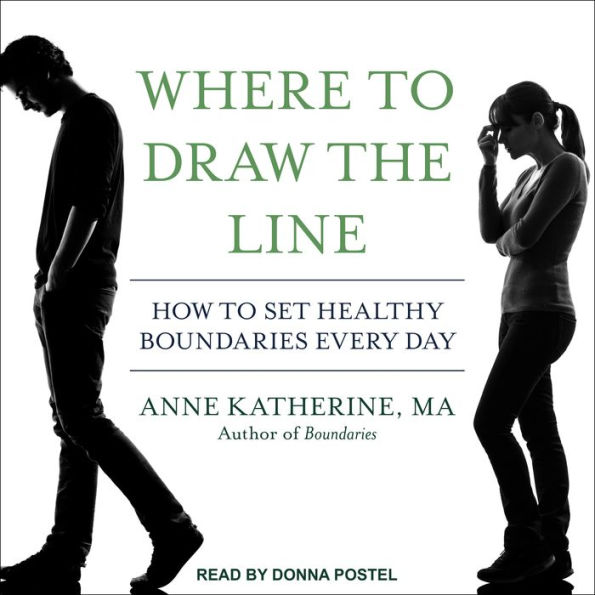In the perennial favorite Boundaries, Anne Katherine introduced the concept and importance of personal limits. In Where to Draw the Line, she takes the next step with a practical guide to establishing and maintaining healthy boundaries in a wide range of situations.
With every encounter, we either demonstrate that we'll protect what we value or that we'll give ourselves away. Healthy boundaries preserve our integrity. Unlike defenses, which isolate us from our true selves and from those we love, boundaries filter out harm.
This book provides the tools and insights needed to create boundaries, which will free time and energy for the things that matter-and helps break down limiting defenses that stunt personal growth. Focusing on every facet of daily life-from friendships and sexual relationships to dress and appearance to money, food, and psychotherapy-Katherine presents case studies highlighting the ways in which individuals violate their own boundaries or let other people breach them. Using real-life examples, from self-sacrificing mothers to obsessive neat freaks, she offers specific advice on making choices that balance one's own needs with the needs of others.
1114922850
With every encounter, we either demonstrate that we'll protect what we value or that we'll give ourselves away. Healthy boundaries preserve our integrity. Unlike defenses, which isolate us from our true selves and from those we love, boundaries filter out harm.
This book provides the tools and insights needed to create boundaries, which will free time and energy for the things that matter-and helps break down limiting defenses that stunt personal growth. Focusing on every facet of daily life-from friendships and sexual relationships to dress and appearance to money, food, and psychotherapy-Katherine presents case studies highlighting the ways in which individuals violate their own boundaries or let other people breach them. Using real-life examples, from self-sacrificing mothers to obsessive neat freaks, she offers specific advice on making choices that balance one's own needs with the needs of others.
Where to Draw the Line: How to Set Healthy Boundaries Every Day
In the perennial favorite Boundaries, Anne Katherine introduced the concept and importance of personal limits. In Where to Draw the Line, she takes the next step with a practical guide to establishing and maintaining healthy boundaries in a wide range of situations.
With every encounter, we either demonstrate that we'll protect what we value or that we'll give ourselves away. Healthy boundaries preserve our integrity. Unlike defenses, which isolate us from our true selves and from those we love, boundaries filter out harm.
This book provides the tools and insights needed to create boundaries, which will free time and energy for the things that matter-and helps break down limiting defenses that stunt personal growth. Focusing on every facet of daily life-from friendships and sexual relationships to dress and appearance to money, food, and psychotherapy-Katherine presents case studies highlighting the ways in which individuals violate their own boundaries or let other people breach them. Using real-life examples, from self-sacrificing mothers to obsessive neat freaks, she offers specific advice on making choices that balance one's own needs with the needs of others.
With every encounter, we either demonstrate that we'll protect what we value or that we'll give ourselves away. Healthy boundaries preserve our integrity. Unlike defenses, which isolate us from our true selves and from those we love, boundaries filter out harm.
This book provides the tools and insights needed to create boundaries, which will free time and energy for the things that matter-and helps break down limiting defenses that stunt personal growth. Focusing on every facet of daily life-from friendships and sexual relationships to dress and appearance to money, food, and psychotherapy-Katherine presents case studies highlighting the ways in which individuals violate their own boundaries or let other people breach them. Using real-life examples, from self-sacrificing mothers to obsessive neat freaks, she offers specific advice on making choices that balance one's own needs with the needs of others.
19.99
In Stock
5
1

Where to Draw the Line: How to Set Healthy Boundaries Every Day

Where to Draw the Line: How to Set Healthy Boundaries Every Day
FREE
with a B&N Audiobooks Subscription
Or Pay
$19.99
19.99
In Stock

Product Details
| BN ID: | 2940171186944 |
|---|---|
| Publisher: | Tantor Audio |
| Publication date: | 05/22/2018 |
| Edition description: | Unabridged |
Videos

From the B&N Reads Blog
